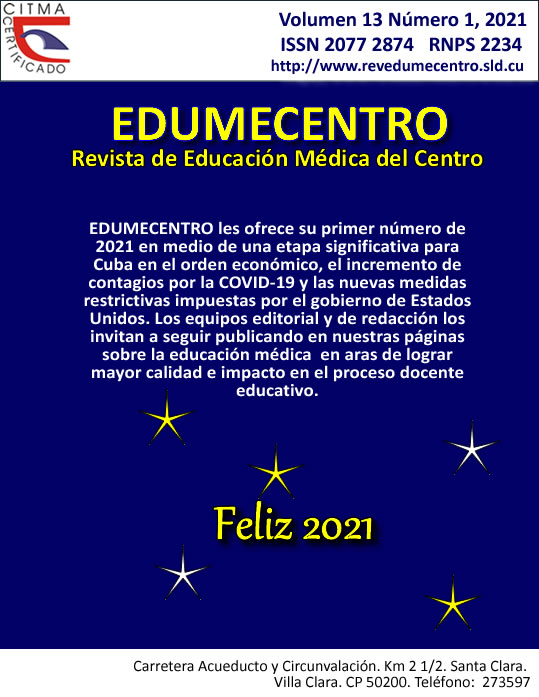In defense of the proscribed gerund ―neither horror, nor error―
Keywords:
language, communication barriers, language arts, education, medicalAbstract
Background: a recurrent linguistic difficulty in the written texts of health professionals lies in the incorrect use of the gerund due to the influence of the English language in Spanish, bad translations, linguistic ignorance and ingrained ―dogmatic― misconceptions.
Objective: to base the correct use of the Spanish gerund in scientific writing, as an important and necessary structure of the Spanish language.
Methods: a bibliographic review was carried out, 32 texts were consulted ― degree theses, original articles and review articles. After preliminary reading, 20 were selected, taking into account the updating of the bibliography and its relevance to the proposed objective.
Results: according to the analysis, the gerund can be correctly used in the most dissimilar situations. The multiplicities of functions granted to this non-personal verbal form by inexperienced in the language have weighed down its functions and have generated fear among those who are unaware of its benefits and possibilities. The authors consider that linguistic improvement in the morphosyntactic knowledge of the language is almost nil in a university context where the priority is the domain of medical sciences, together with the lack of interest of some professionals in the branch for not considering language as the best tool for its intellectual projection and as an inherent aspect of their professional image.
Conclusions: it was found that the generality of the consulted authors agree that the gerund can be used in all writing styles, including the scientific one, as long as it is used in correspondence with the linguistic norms.
Downloads
Published
How to Cite
Issue
Section
License
Los autores que publican en esta revista están de acuerdo con los siguientes términos:- Los autores/as conservarán sus derechos de autor y ceden a la revista el derecho de primera publicación de su obra, el cuál estará simultáneamente sujeto a una Licencia Creative Commons Reconocimiento-NoComercial-CompartirIgual 4.0 Internacional (CC BY-NC-SA 4.0) que permite a terceros compartir la obra siempre que se indique su autor y su primera publicación esta revista.
- Los autores pueden establecer por separado acuerdos adicionales para la distribución no exclusiva de la versión de la obra publicada en la revista (por ejemplo, situarlo en un repositorio institucional o publicarlo en un libro), con un reconocimiento de su publicación inicial en esta revista.
- Se permite y se anima a los autores a difundir sus trabajos electrónicamente (por ejemplo, en repositorios institucionales o en su propio sitio web) antes y durante el proceso de envío, ya que puede dar lugar a intercambios productivos, así como a una citación más temprana y mayor de los trabajos publicados (Véase The Effect of Open Access) (en inglés).










